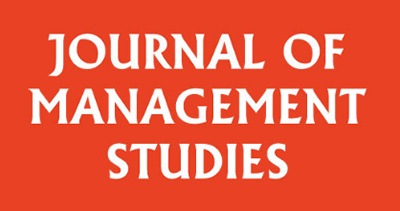Welcome to the Management Studies Insights Blog
The managementstudiesinsights.com blog provides engaging snapshots about research published in the Journal of Management Studies in a manner that highlights its practical and societal implications. The blog aims to bridge academic scholarship in management studies with scholars across disciplines, practitioners, media and the broader public who are interested in the societal relevance of management studies, and invites for discussion about the impact that management scholarship has beyond academia. The Management Studies Insights Blog is the official blog of the Journal of Management Studies.

Get Lucky: How and Why Organizations Can Cultivate Serendipity
Serendipity – the notion of making surprising and valuable discoveries – plays a major role for individuals and organizations alike. Numerous innovations and inventions such as potato washing machines, Velcro, and Viagra can be traced back to serendipity, and many...

How Does Scientific Argumentation Differ from the Opinion of Scientists? A Response to Siegel (2022)
Recently, the Journal of Management Studies (JMS) has published an interesting debate on the Responsible Research in Business and Management Initiative (RRBM) and the role of our research for the benefit of society, organizations, and workers (Siegel, 2022; Tsui &...

Neutral In-tensions: Struggles in Coaching
Jose, an experienced coach who has long been a pacifist, has found it increasingly difficult to sleep since he was offered to enhance the performance of a military team; he feels extremely conflicted that he is betraying his values while at the same time telling...

Beware: How you justify your actions today shapes how you view “responsibility” tomorrow
How do corporations justify their (tax) conduct? Many businesses faced bankruptcy due to the impact of the global pandemic. Thankfully, government support kept many companies and entire industries afloat. Whilst government support is often expected, especially in...

Meditation versus Service: How does a Buddhist temple manage its organizational identity conflict?
Buddhist temples across Asia The ultimate goal of traditional Buddhist ordainment is liberation (Nibbāna in Pāḷi), typically understood as a solitary path to achieve a spiritual mental state. However, this sacred belief system has been largely challenged owing to the...

Model minority or foreign threat? Unpacking workplace racial violence experienced by Asian American and Asian Canadian professionals and their response during COVID-19
Asian Americans and Asian Canadians (herein, referred to as Asians) in North America have long been viewed as a model minority group that is White or White-adjacent, rarely if ever experiencing racial discrimination. Yet, their actual lived experiences show otherwise...

The Organizational Impact of Business Model Innovation: Assessing the Person-Organization Fit
Why the person-organization fit matters for business model innovation Product life cycles shorten, novel technologies surface, profit margins melt, and existing businesses are jeopardized by digitalization. These changing business environments pressure organizations...

Unintended consequences of new technology deployment – Control practices that kill and save trust
New technology deployment gives start to different changes in organizations and disrupts existing practices – for better and for worse. The dynamics of control and trust are not immune to these changes. Our study focuses on the unintended consequences of new...

Opportunity or Threat? Exploring Middle Manager Roles in the Face of Digital Transformation
Threatened by announcements such as “When Machines Replace Middle Management” (Forbes, 2015) and “Data is the new middle management” (WSJ, 2015), middle managers have experienced considerable uncertainty during the last decade. Impending role envelopment can have...

Can algorithms do something for me? Understanding online workers’ perspectives of algorithms and reactions to online ratings on a major platform
Digital platforms are complex algorithmic structures connecting dispersed buyers and sellers of services. On platforms such as Guru or Upwork, for instance, customers can search for logo designers or IT developers through algorithms, which provide suggestions about...
